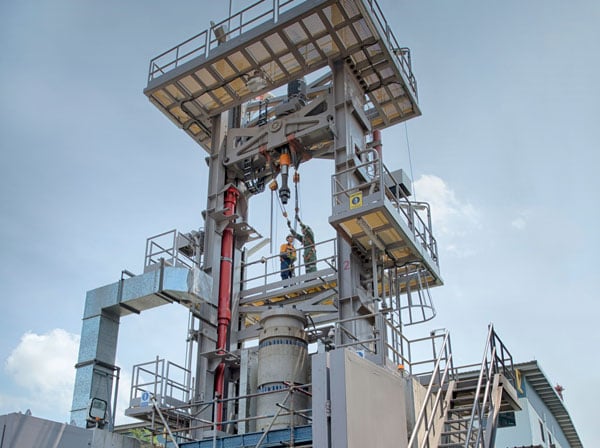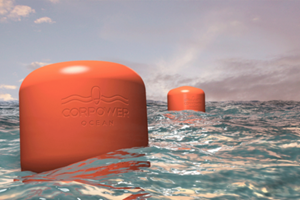Making deep sea drilling safer
As the global industry looks for safer deep sea oil drilling solutions, MPO’s gas riser handling systems are in high demand. In just a few years, they’ve grown from a small office into a global supplier with over 200 employees.
Ever since the 2010 Deepwater Horizon explosion in the Gulf of Mexico, which killed 11 men and led to the largest oil spill in US history, deep sea oil operations have embarked on a sector-wide mission to stop another incident of that scale from happening again.
 The equipment that is optimized for safety, and is geared toward eliminating the huge costs associated with failures, has been at the forefront of that push.
The equipment that is optimized for safety, and is geared toward eliminating the huge costs associated with failures, has been at the forefront of that push.
Leading the pack in the post-Deepwater Horizon goal to better deal with riser gas is a company called Managed Pressure Operations (MPO), which began engineering operations in Singapore three years ago with an office comprising just three desks.
Managing risk around riser gas in oil rigs is currently where the leading technological advancements are being made in equipment design. MPO has grown to a workforce of around 200 people and is busy building and shipping its equipment to all corners of the world.
“The technology to stop an event like the Deepwater Horizon incident is available to us today and we’re at the forefront of this,” says Alex MacGregor, Development Manager at MPO.
Awarded the Woelfel Best Mechanical Engineering Achievement last year by the American Society of Mechanical Engineers (ASME), MPO’s gas riser handling system is designed to manage the gas – and therefore associated gas risks – out of the traditional oil drilling process.
“You’ve got the rig on the surface and the riser going down to the seabed – and that might be anything up to 8 or 9,000–ft below, where you’ve got the subsea blowout preventer, which is an enormously capable and enormously expensive piece of equipment,” MacGregor says.
“But because it is 8–9,000ft below the rig, it is actually very difficult to detect gas which has started to enter your drilling mud before it’s already above that subsea blowout preventer. When that happens, the gas, as it rises from the seabed, expands massively and pushes all of the drilling mud ahead of it.”
The way a conventional rig has to deal with this is the diverter is closed and the drilling mud and gas get blasted overboard through huge diversion lines, which costs rigs in lost time.
“That kind of event costs a huge amount in loss of time, as much as $30m,” says MacGregor. “With our equipment we add another blowout preventer just below the rig. We control pressure build-up, stopping the gas bubbles expanding as they rise, and then process the mud and gas returns in a large mud-gas separating vessel, which we also supply the rig with. We then flare off the gas and return the drilling mud to service.”
The simplest version of the MPO gas riser handling system is 25 tonnes and 50 feet long with the largest version being 70 tonnes and 70 feet long. Its design features nuts and bolts in incredibly tight spaces, which means the most difficult-to-access parts of the equipment rely on Superbolt tensioners.
“I have dismantled and assembled this piece of equipment about a dozen times,” says Sayed Idris, Product Assembly Supervisor at MPO, Singapore. “Access to a conventional bolt would have been almost impossible, but it is easy with the Superbolts.”
MPO is working on its fifth gas riser handling system for clients including Transocean, Statoil and Repsol, one system will soon be dispatched to oil fields in Brazil, one to the Gulf of Mexico and one for Papua New Guinea.
“The key factor in building this piece of equipment was to ensure compactness: our number one problem was making this system as small and compact as possible,” MacGregor says.
“Throughout the design you have these impossible-to-get-to fasteners, which you couldn’t put together without the Superbolt.”
The advancements made in technology to manage gas riser incidents on oil rigs resulted in huge cost savings for rig operators,” MacGregor adds.
“You’ve gone from what would have been an emergency situation – a reportable incident – to something that is basically routine, which can handle it without ‘down time’ and everyone wins. On the very high day rates at the rig – it may take anything up to a week to stabilise the well again after an incident like this – that’s already $14 million.”
FACTS: Managed Pressure Operations (MPO)
WHO: MPO is designing, building and transporting gas riser handling systems for clients – such as Transocean, Statoil and Repsol – to Brazil, and the Gulf of Mexico.
GAS RISER HANDLING SYSTEM SIZE: The largest is 70 tonnes and 70 feet long, the smallest is 25 tonnes and 50 feet long.
TOTAL NUMBER OF EMPLOYEES: 200
Business argument
This is how MPO benefits from Superbolt tensioners:
- Allows them to develop and build a more compact design.
- Enables secure fastening for hidden fasteners.
- Eliminates the risk of bolt loosening


